Edinburgh Scotland
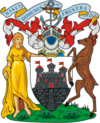 |
Edinburgh is the capital of Scotland, the largest city by area and the second largest by population in the country. Edinburgh lies on the east coast of the Central Belt, along the Firth of Forth, near the North Sea. The city was at the heart of the Scottish Enlightenment. Celebrities from across the continent would be seen in the city streets, among them famous Scots such as David Hume, Walter Scott, Robert Adam, David Wilkie, Robert Burns, James Hutton and Adam Smith. Edinburgh became a major cultural centre, earning it the nickname Athens of the North because of the Greco-Roman style of the New Town's architecture, as well as the rise of the Scottish intellectual elite who were increasingly leading both Scottish and European intellectual thought. |
|
The city hosts the annual Edinburgh Festival, held annually over about four weeks beginning in early August. The number of visitors attracted to Edinburgh for the Festival is roughly equal to the settled population of the city. Among the best-known of these events are the Edinburgh Fringe, the largest performing-arts festival in the world, and the Edinburgh Military Tattoo. | |
Click on an image to see a larger version,
hold cursor on image to see caption
Use arrow icons or
arrow keys to navigate on photo pages.
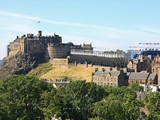 |
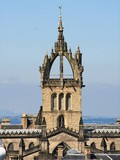 |
 |
 |
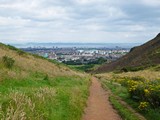 |
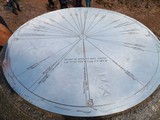 |
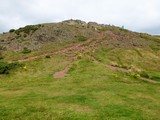 |
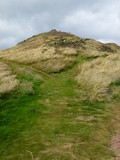 |
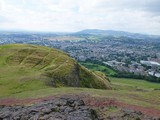 |
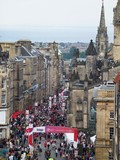 |
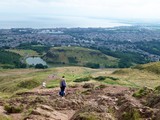 |
The Royal Edinburgh Military Tattoo
|
The Royal Edinburgh Military Tattoo is an annual series of military tattoos performed by British Armed Forces, Commonwealth and International military bands and display teams on the esplanade of Edinburgh Castle. The word "Tattoo" is derived from "Doe den tap toe", the Dutch for "Last orders". Translated literally, it means: "close the (beer) tap". The British adopted the practice and it became a signal to tavern owners to turn off the taps of their ale kegs so that the soldiers would retire to their billeted lodgings at a reasonable hour. With the establishment of modern barracks and full Military bands later in the 18th century, the term Tattoo was used to describe not only the last duty call of the day, but also a ceremonial form of evening entertainment performed by military musicians. |
|
On average, just over 217,000 people see the Tattoo on the esplanade of Edinburgh Castle each year, and it has sold out in advance for the last decade. 30% of the audience are from Scotland and 35% from the rest of the United Kingdom. The remaining 35% of the audience consists of 70,000 visitors from overseas. |
Click on an image to see a larger version, hold cursor on image to see caption
 |
||||
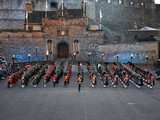 |
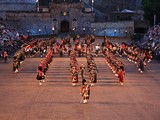 |
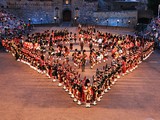 |
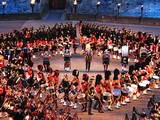 |
 |
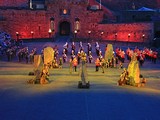 |
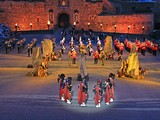 |
 |
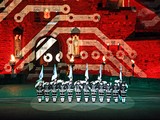 |
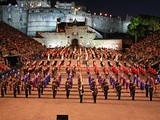 |
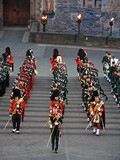 |
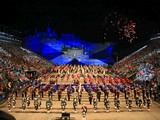 |
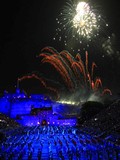 |